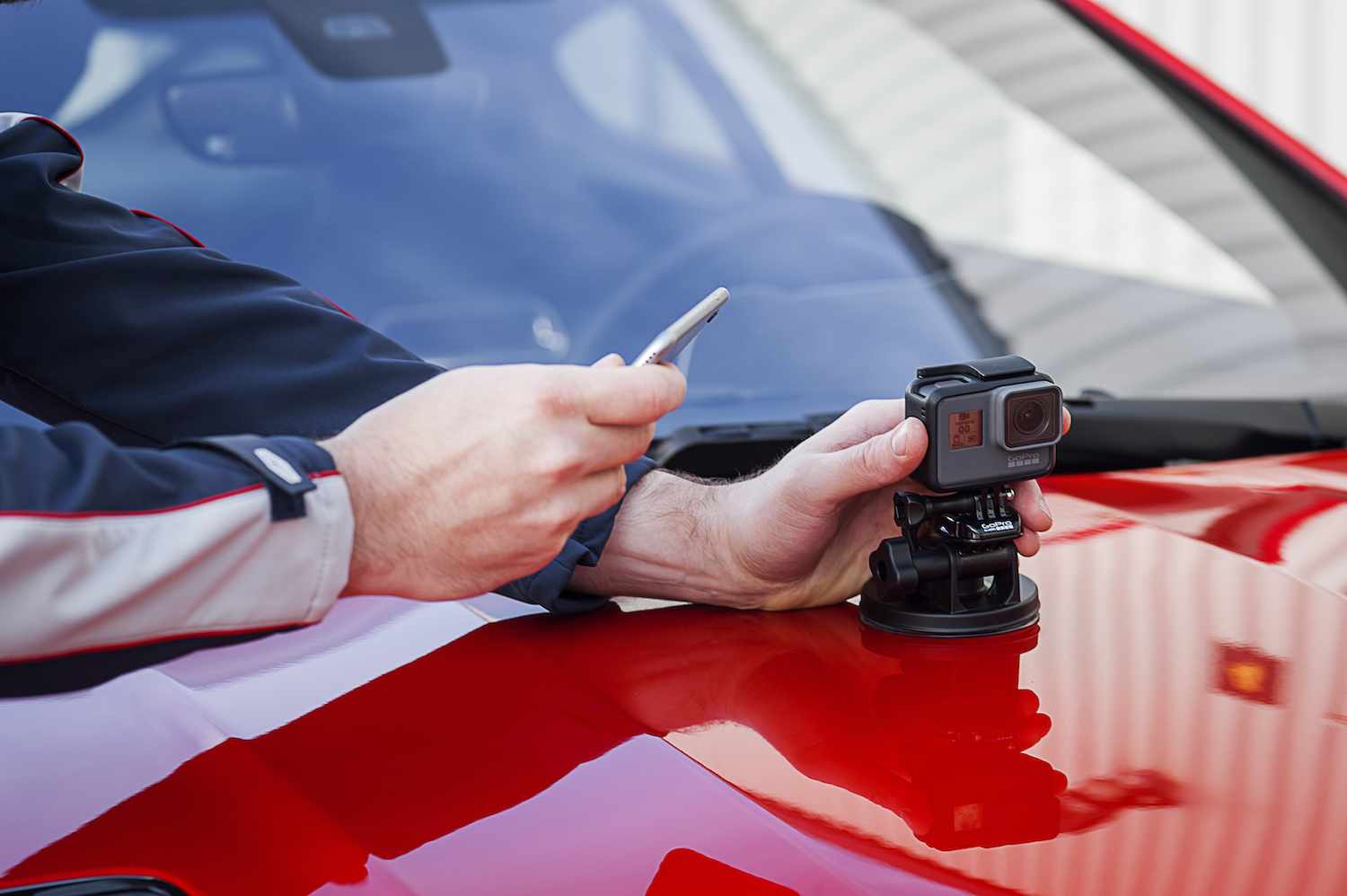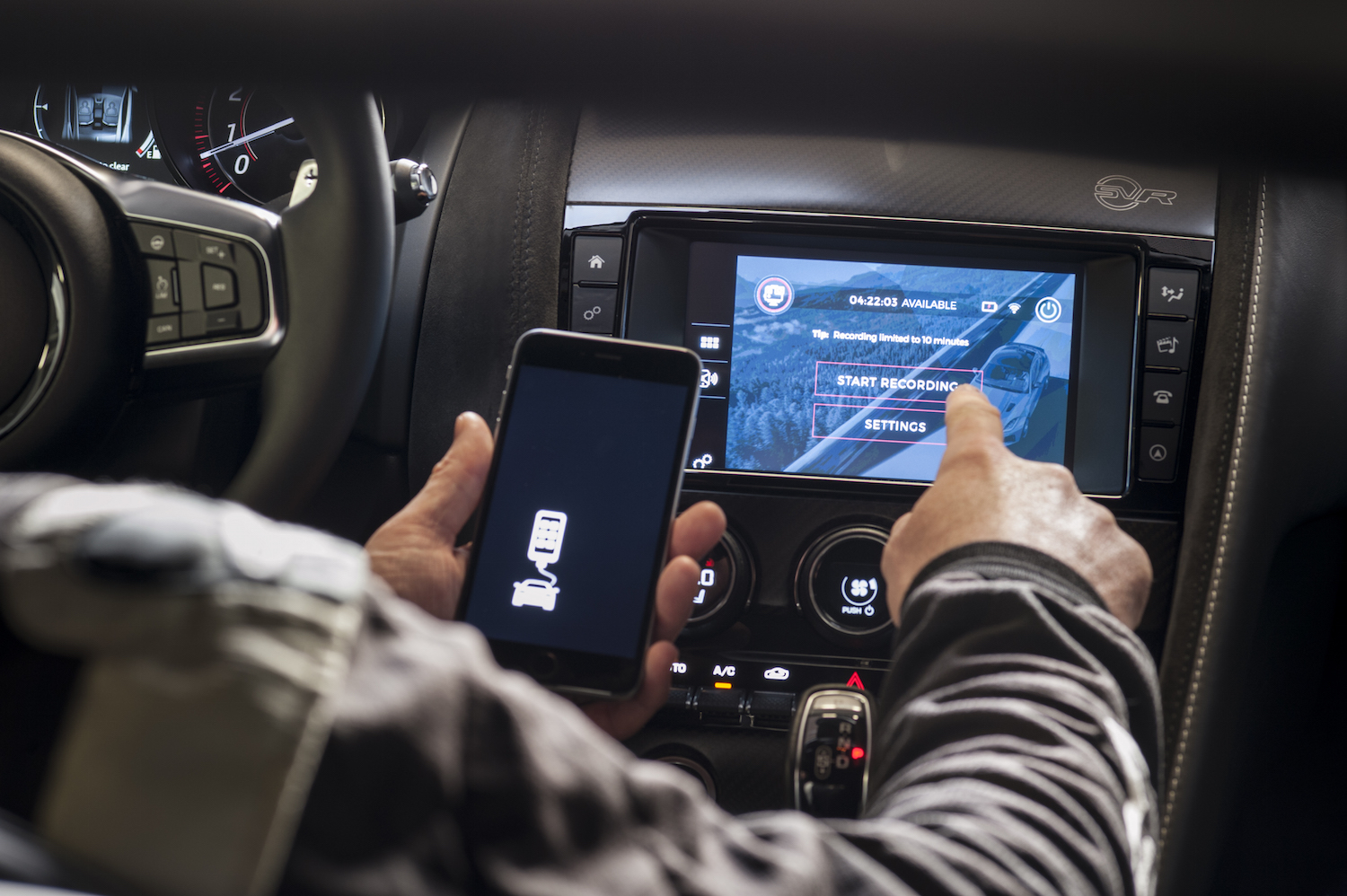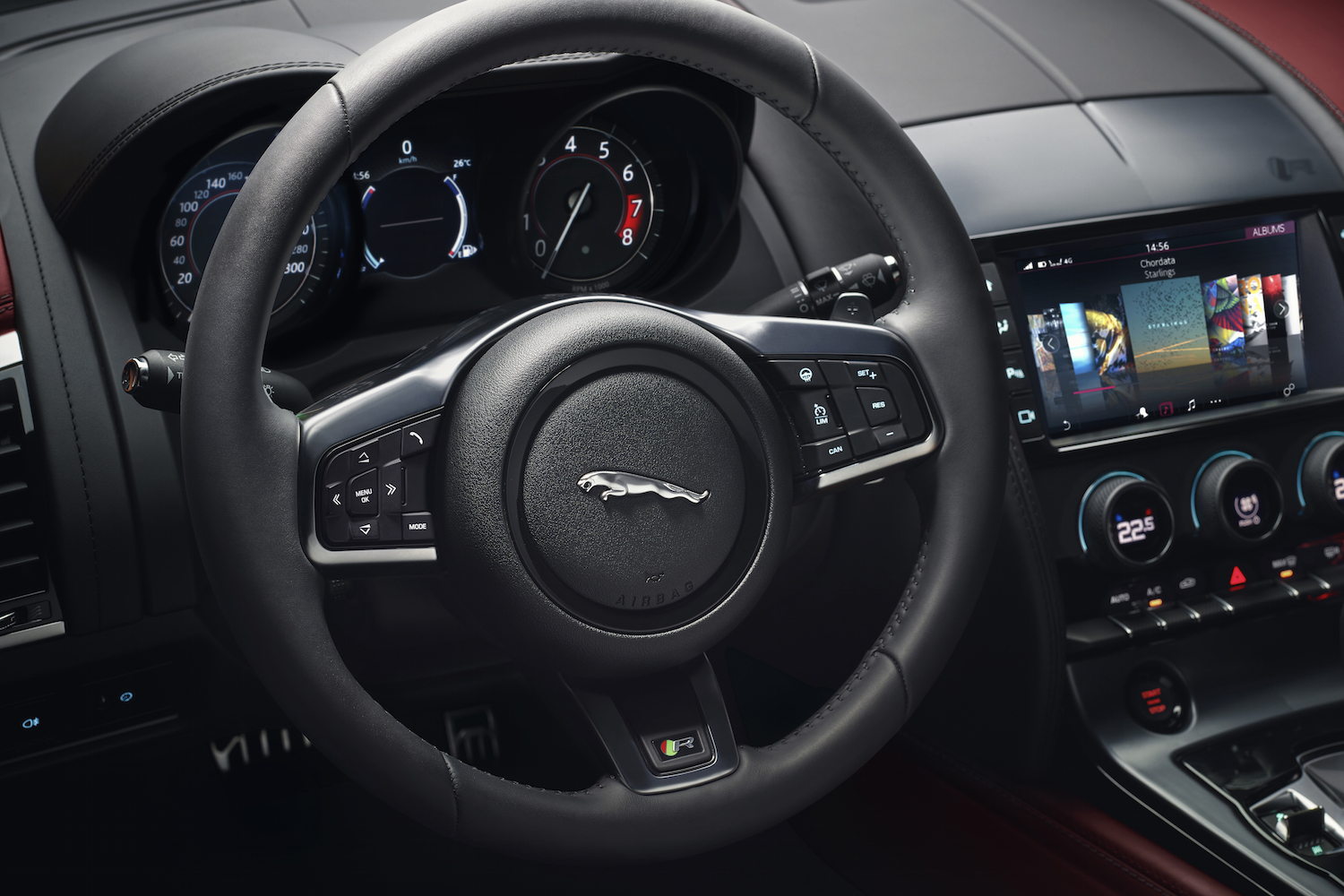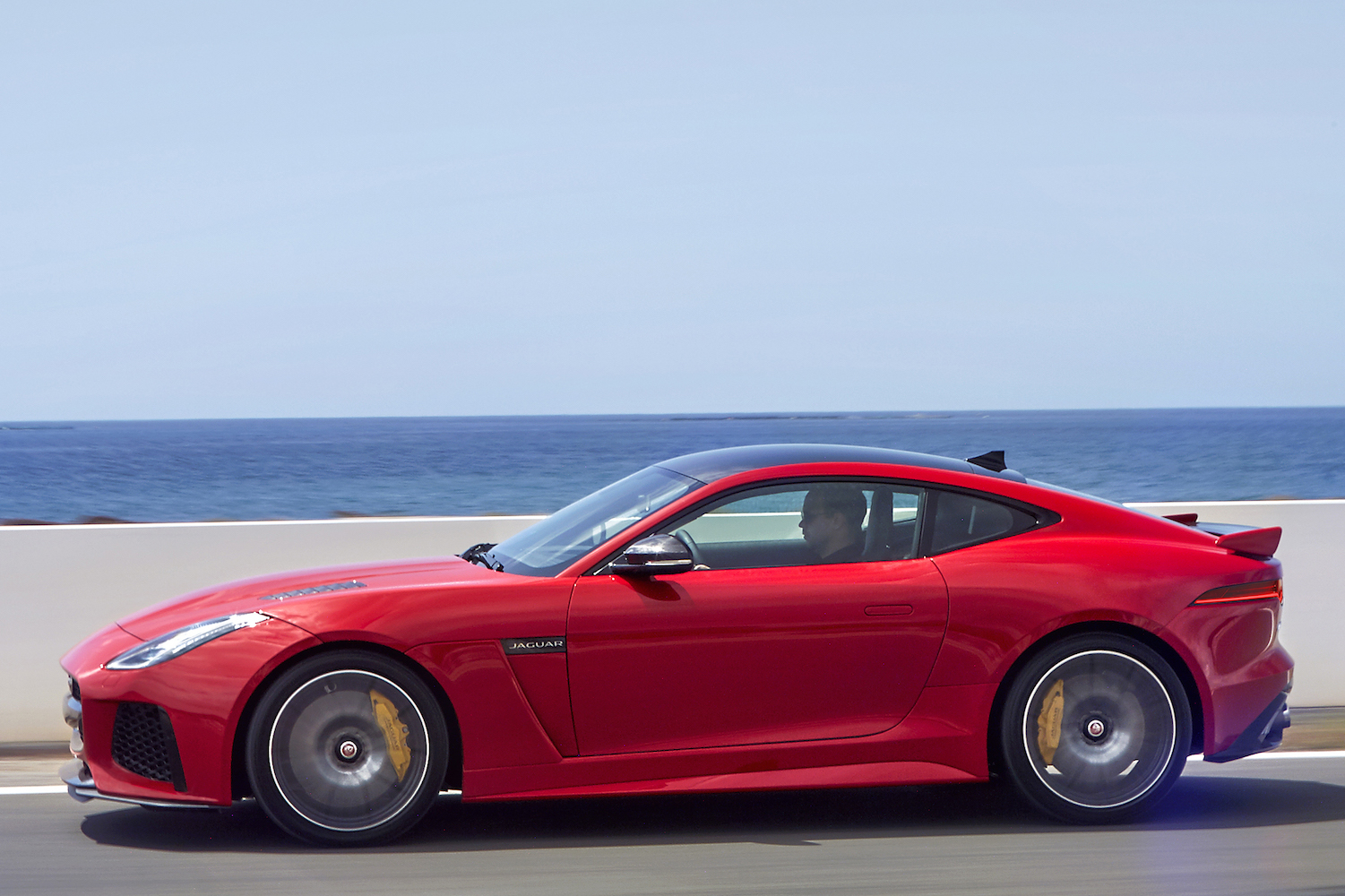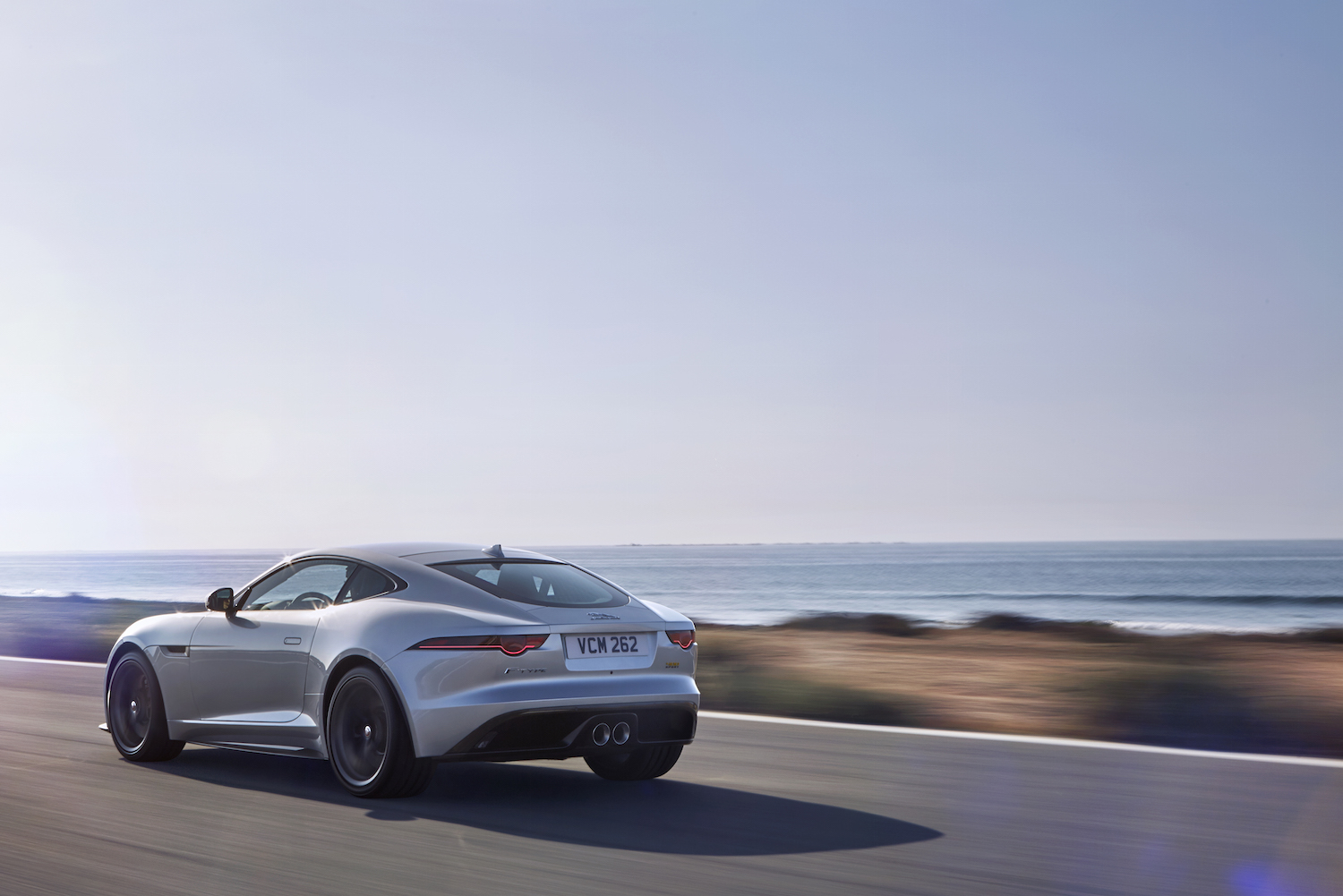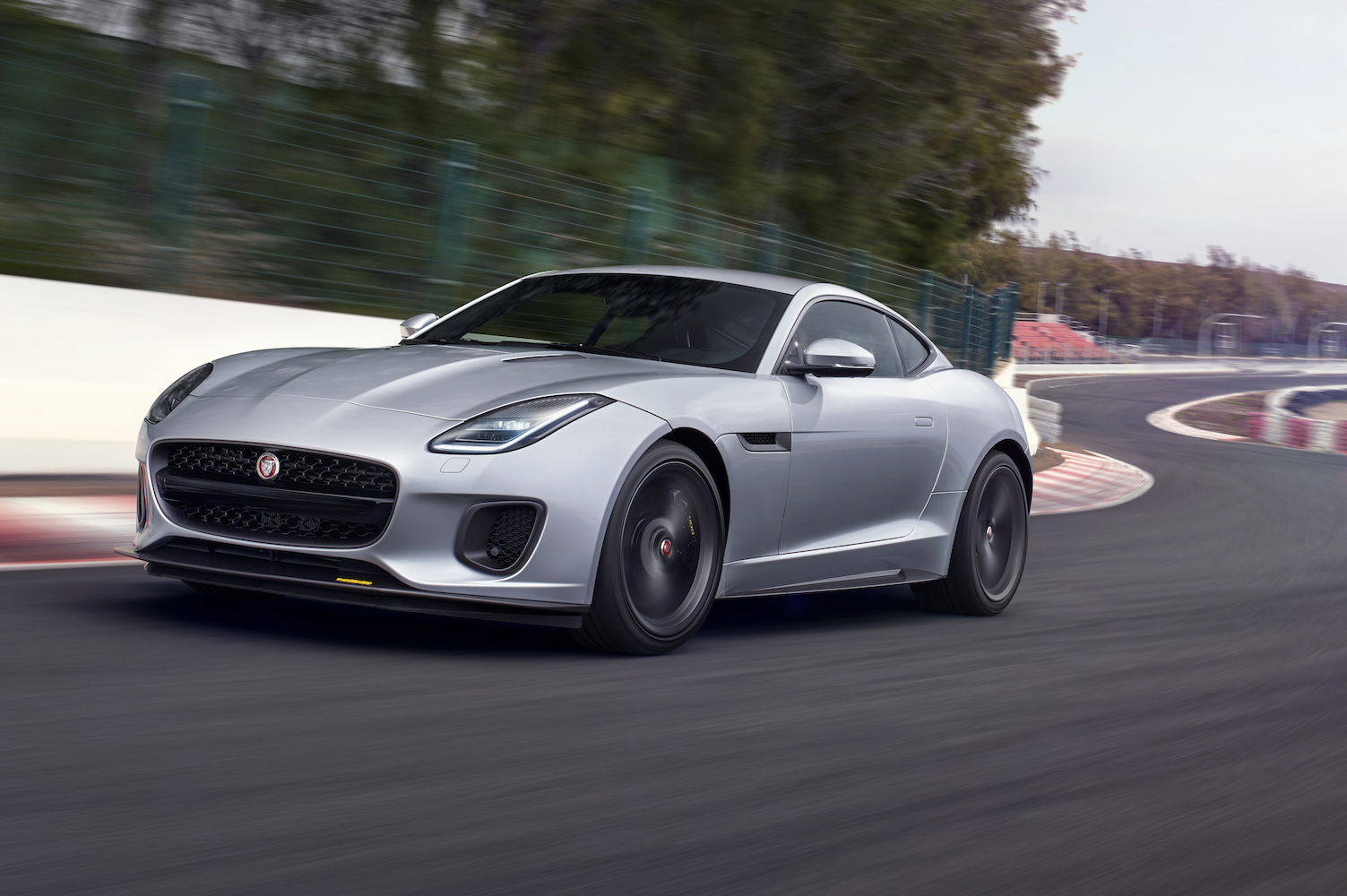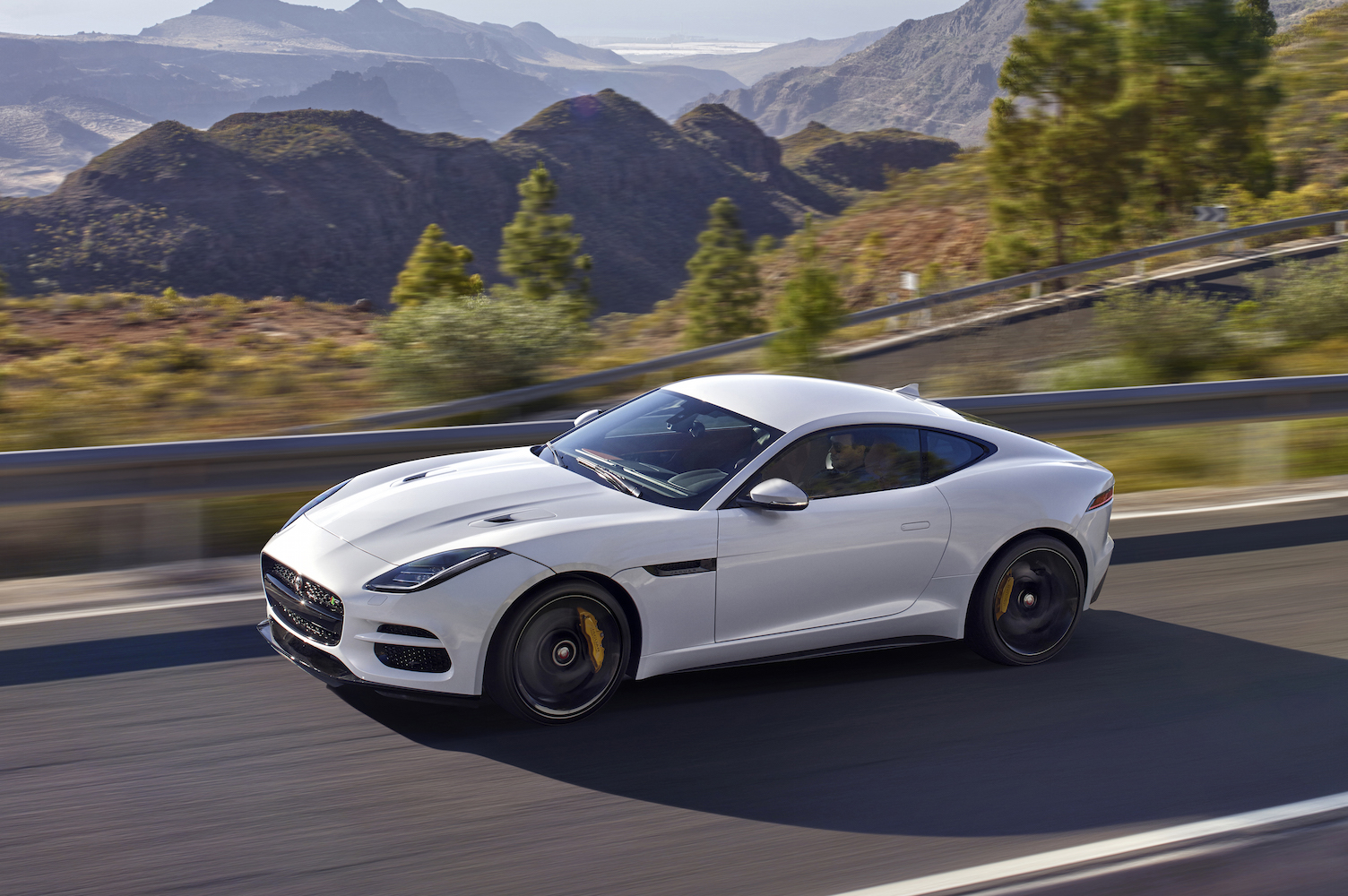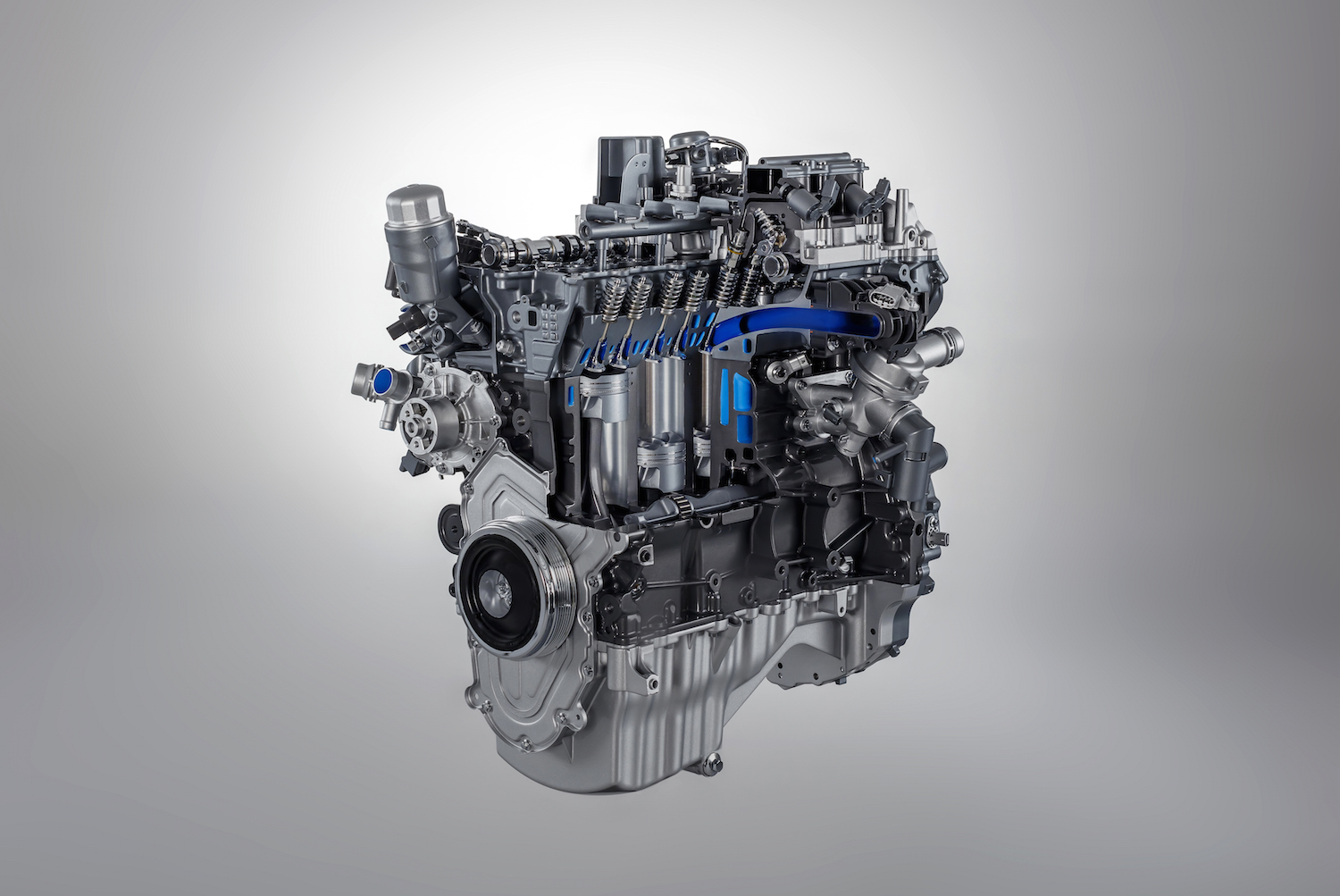Jaguar’s F-Type sports car is getting a refreshed look, new powertrains, and cool technology for the 2018 model year. Debuting at this year’s New York Auto Show, the updated F-Type now has a wider range of variants, making the model accessible to more people.
The 2018 F-Type headliner is an entry-level version powered by a new 2.0-liter turbocharged four-cylinder good for 296 horsepower and 295 pound-feet of torque. Even with a smaller motor, the most basic F-Type can hit 60 mph in 5.4 seconds, thanks in part to a weight savings of 114 pounds compared to the V6 model. The only transmission option will be an eight-speed automatic.
“Introducing our advanced four-cylinder engine to the F-TYPE has created a vehicle with its own distinct character,” said Ian Hoban, vehicle line director for Jaguar F-TYPE. “Performance from an engine of this size is remarkable and is balanced with improved fuel efficiency and affordability, making the F-TYPE experience more accessible than ever before.”
Apart from a new engine, the entire F-Type range benefits from Jaguar’s standard InControl Touch Pro infotainment system. The updated unit features smartphone-like pinch-to-zoom and swipe functionality, live traffic and weather data, and ETA sharing.
Jaguar also announced a partnership with GoPro and its ReRun app. A mounted GoPro camera captures live video (ideally during track driving) and overlays the footage with performance data like speed, throttle position, gear selection, braking force, and G-force. The final output can be downloaded and shared via smartphone. Chevy offers a similar system in its Corvette, but the F-Type’s GoPro system will give drivers more information.
Jaguar is also differentiating its F-Type range with a unique front bumper for each of the four versions. The most notable change is a replacement of the “shark gill” intake slats with a large, single mesh opening. This styling cue is pulled directly from the F-Type SVR and gives a car a more aggressive look. Full LED headlights also sharpen the front design and complement J-Blade daytime running lights. The only rearward change is darker taillight housings.
Inside, new Slimline seats add comfort while cutting weight. The seats’ aluminum alloy frame cuts 17 pounds from previous-generation sport buckets. Two ergonomic designs will be available – sport, and a more aggressively bolstered performance chair.
The 2018 F-Type will be offered in standard, Sport, R, and SVR trims. A Sport 400 special edition is offered for the 2018 model year only, with a tuned version of the 3.0-liter supercharged V6 making – you guessed it – 400hp. Other tweaks on the Sport 400 include bigger front and rear brakes, 20-inch Dark Satin wheels, and drive modes to adjust the dampers, throttle mapping, steering, and shift speed.
The 2018 F-Type goes on sale later this year, starting at $59,900.

